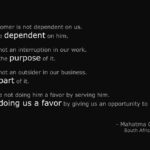I had a very engaging conversation this Wednesday morning with quite a brilliant communications consultant on communication and what it takes to communicate effectively and to connect with various audiences. What stood out for me in that day was a story he shared about an unpleasant experience he’d had at the Out Patient Department of a major hospital recently. He went on to recount how the rather young doctor had very poor communication skills and didn’t seem to care about his patient or their interaction. And how this irked him to the extent that he spewed his vent on social media with details of the specific hospital and the particular doctor’s name describing his experience. Interesting how one member of staff can have the entire organization’s brand mud slung right?
We discussed modern day medicine and how in this day and age times have changed, and patients conduct extensive research about their conditions and could almost self-prescribe if it were permitted. We talked about how the doctor- patient relationship has shifted to one of actual consultation and partnership rather than a one way tight lipped conversation, with the doctor issuing instructions as has been the case in the past.
We conversed about how patients want to be seen and acknowledged as human beings and not just as statistics, like patient number X in the queue or patient in cubicle Y or in bed Z. We also talked about the need to recognize that each patient has their own unique needs and expectations. We agreed that it is of essence to acknowledge that patients are actually real people (someone’s father, brother, mother, sister, colleague in the office, friend or relative). They are real people and want to be treated as such. The onus therefore landing squarely on the doctor to handle each patient and meet them at their point of need. This calls for the doctor to be that much more discerning, attentive, intuitive and ultimately, caring.
This brings to the fore the rather over spoken about but still very important notion, that it behooves the professional in whichever profession, to handle their customers as they themselves would wish to be handled. To actually walk in the customers shoes and understand where they are coming from and what circumstances they speak from as they put across their needs. The communication then to the customer will be varied and tailored to suit the specific situation.
In this specific case it would be in the best interest of both doctors and their patients if the former would make special effort to literally wear the patient’s shoes and understand where exactly the shoe pinches. This simple move would up the communication game and up the level of service delivery in healthcare, making for quicker, smoother, more effective doctor-patient relationships and ultimately creating a healthier happier nation.






